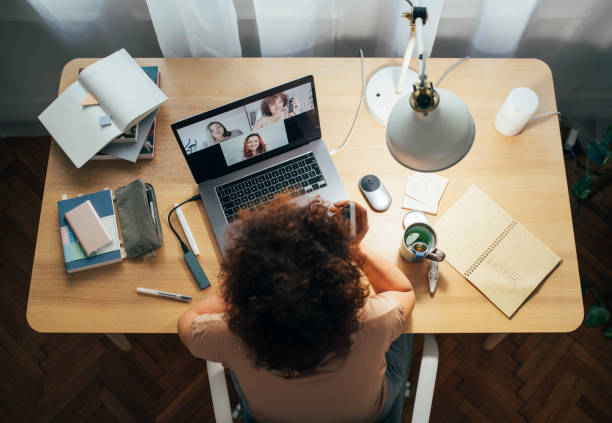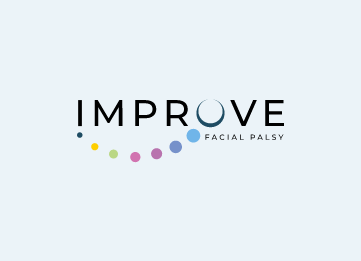The First Week
During the first week your facial muscles will be weak, and you will find that the muscles are feeling heavy and floppy. The affected muscles will droop and make you look asymmetrical. This is called the flaccid stage.
Day 1
It is important not to panic but to seek medical help as soon as you experience symptoms. Remember that whilst this is an extremely distressing condition most people make an excellent recovery within the first 3 months. Some people will experience a slower recovery and may not notice any improvement for several weeks following the onset of symptoms.
Medication
- As soon as you notice symptoms you should be seen by your GP or go to your local Accident and Emergency Department. This is very important because an early diagnosis is essential in order that you receive the correct treatment in a timely fashion. For those diagnosed with Bell’s palsy, the current guidelines are treatment with a steroid medication called Prednisolone, the optimum dose includes the following two options:
-
-
- Prednisolone 50mg daily for 10 days OR
- Prednisolone 60 mg daily for 5 days followed by a daily reduction in dose of 10 mg
-
Antiviral treatments alone are not recommended. However, follow the specialist advice from your doctor, as in some cases antivirals may be prescribed in combination with steroids.
In order to maximise recovery, steroids must be prescribed within the first 72 hours following the onset of symptoms. https://cks.nice.org.uk/bells-palsy#!scenario
Spontaneous recovery will take place with or without the addition of steroids. Steroids simply aid recovery in some instances, but they do not guarantee a full recovery.
Eye Protection
- The muscles around the eye will be weak and it will be difficult to close your eye and to blink in the normal way. You may find that the affected eye is wide in comparison to the unaffected side.
- You will need to ensure that your doctor prescribes an eye lubricant (preservative free) to prevent the eye from becoming dry. A dry eye is vulnerable to ulceration which if left untreated can cause loss of vision.
- Taping the eye closed for sleep. You should receive information on how to tape your eye closed for sleep.
- Wear sunglasses when you go outside even if it isn’t sunny, this is because you won’t be able to squint or screw your eyes up tightly to protect your eye from direct sunlight.
- Wraparound sunglasses will also help prevent air and dust particles going into the eye which can cause further dryness and irritation.
- Manual blink
If at any time during your recovery you experience problems with discharge from your eye or a red or itchy sore eye you must go to your GP for specialist help. It may be necessary to see an Ophthalmologist who can offer other interventions which will help protect your eye until your facial nerve recovers.
Pain Management
- You may be experiencing some pain which can be like earache or pain behind the ear. You may find a combination of Paracetamol and Ibuprofen helps control the pain. Please follow the recommended dose as stated on the prescription sheet/packaging. If you find that you are unable to control the pain in this way, then consult with your GP about alternative pain relief.
Psychological help
- Anxiety and depression are common symptoms especially in the early days of recovery. You may feel lonely and isolated. The charity, Facial Palsy UK, can offer support in the following ways: support groups; support via email/telephone; their website which is full of useful information, education and personal accounts from people living with facial palsy. www.facialpalsy.org.uk
Muscle Management
- Facial massage
Eating and Drinking
- Eating and drinking can be affected because lip and cheek muscles are weak, and it may be more difficult to chew and prepare food for swallowing. Choosing an easy chew diet may help prevent spillage from the corner of your mouth. You may find you dribble a bit when you drink. Using a straw may stop this from happening or drinking from a think lipped cup.
You will need to follow all the recommendations described above in order to maximise your recovery and help prevent any secondary problems, for example, dry-eye.
Week 2
Some people will start to notice improvement after the first week. Others may experience a slower recovery, and it may take several weeks before your face starts to improve.
You will need to continue with all your medication, as prescribed, and all the eye care until your eye closes when you sleep and until you can blink normally. In some instances, it can take longer for the eye to recover compared to other parts of the face.
Week 3
By the end of the third week a full recovery is likely for the majority of people. For those who make a slower recovery it is important to continue with all the early advice and to understand that the nerve will recover in its own time. If the nerve damage is marked it will take longer to recover. There is nothing which can make the nerve recover more quickly and energy should focus on maintaining muscle health (massage) and compensating for loss of function, for example, eye care. Making sure you maintain a balanced diet and rest well will contribute to your general health and maximise your potential to recover.
Relaxation for the face at rest
For people experiencing a slower recovery, it is helpful to undertake a programme of relaxation for the face. This is a very important part of maintaining muscle health because the facial nerve, as it starts to recover, may behave in a different way forgetting when it should be working and when it should be resting. The aim with relaxation is to teach yourself how to maintain very low nerve activity when you are at rest, so the nerve understands that it does not need to work when the muscles aren’t moving. Secondly, the unaffected side of the face can try and compensate for the weakness on the affected side of the face and therefore overwork and become very dominant. Facial relaxation at rest for short intervals throughout the day can help prevent these two situations from happening or if already a symptom relaxation can resolve the problem.
Weeks 4-6
Unless you have experienced a full recovery, the following should continue to be part of your rehabilitation.
- Facial massage
- Facial relaxation at rest
- Eye care
If you experience tearing in the affected eye, then it is likely that the eye is dry, so it is very important that regular eye lubrication continues even if you think that your eye is closing properly. The blink may be better but often it takes much longer to fully recover and the blink is often slow and incomplete for many weeks and months.
If you have not noticed any signs of recovery 6 weeks following the onset of your symptoms, then you should seek a referral to a specialist facial palsy service or specialist therapist experienced in the rehabilitation of facial palsy. You will need a GP referral or Consultant referral in order for this to happen. It may take several weeks or possibly months before you receive an appointment which is why a referral should be requested at this stage. It may be that you go on to make an excellent recovery before you are seen by a specialist but is still worth keeping that appointment just in case there are any minor residual problems that need to be addressed.
By this time your muscles may be less droopy and feel firmer. Your facial symmetry at rest may have improved and you might have noticed tiny flickers of movement. In which case you are progressing and are now in the paretic stage of recovery.
Weeks 6 -12
During this time, you may have noticed that the muscles on the affected side of your face are much firmer. When you carry out your facial massage you may find that they are stiffer when compared to the unaffected side and have become tender to touch. Try comparing the affected side with the unaffected side. If the muscles on the affected side of your face feel thickened, shortened and stiffer than the unaffected side then you should start a programme of muscle releases.
If you continue to experience problems with eye closure and blinking by the end of 12 weeks then you should go to your GP and ask to be referred for a full Ophthalmology assessment, at your local hospital. There are several interventions which may help maintain your eye health and which are non-invasive.
You should be adhering to the following rehabilitation programme:
- Eye care
- Facial massage
- Facial relaxation at rest
- Muscle releases
- Assisted movement
Weeks 12 – 16
During this time, you may have made a really good recovery but can still notice some asymmetry of your facial expressions and perhaps you still have residual problems closing your eye and blinking. Alternatively, you may feel that your recovery is very slow. It is also possible that involuntary movements known as ‘synkinesis’ have started to develop. For example, when you smile your eye starts to close or when you eat your eye starts to wink. You should be adhering to the following rehabilitation programme:
- Eye care
- Facial massage
- Facial relaxation at rest
- Focused relaxation/Zeroing
- Coordinated movement pattern retraining
- Consideration for chemo-denervation (Botox) to manage involuntary movements/synkinesis
After 16 weeks
Progress will continue for many weeks to follow but for those with persisting facial palsy your rehabilitation programme will be an important part of your daily routine for the foreseeable future. Your programme should be modified to your individual needs and your treatment goals can hopefully be set with your rehabilitation therapist. An appointment with a specialist facial palsy service would offer you the optimum help to maximise your recovery but this may not always be possible.



